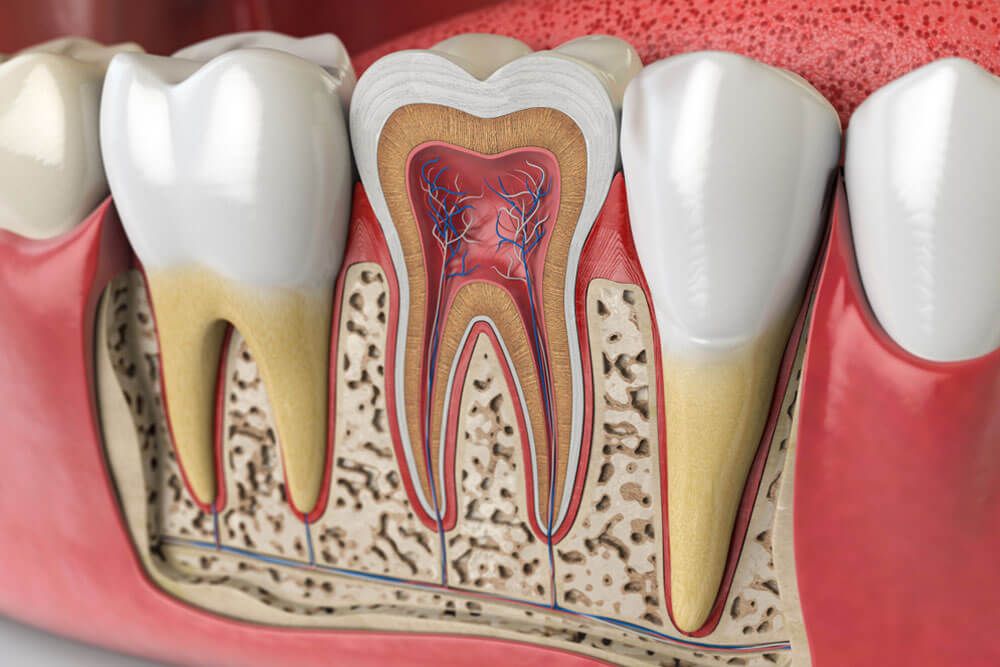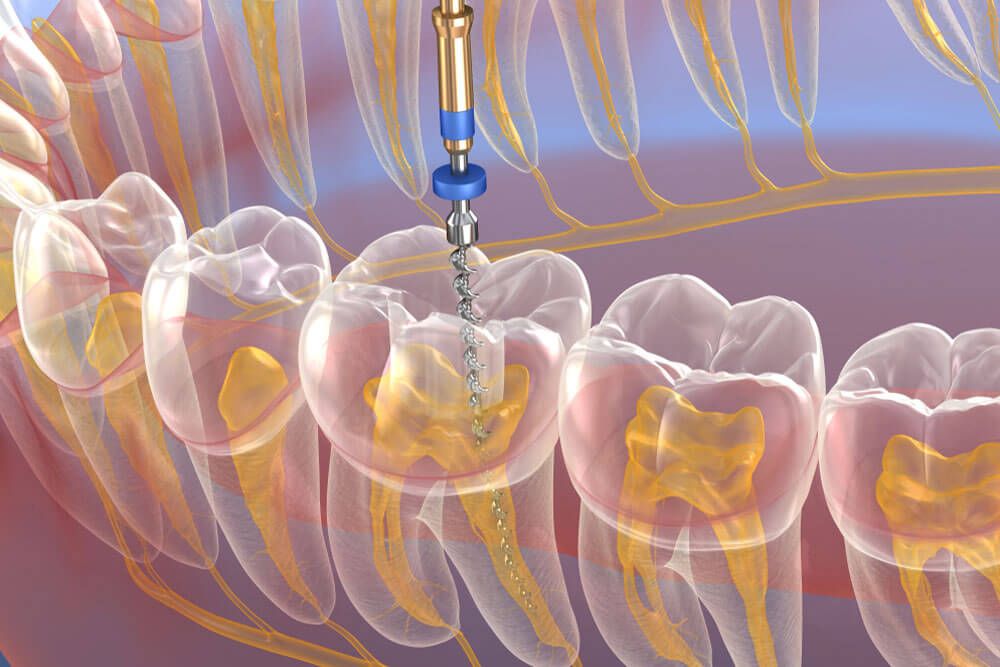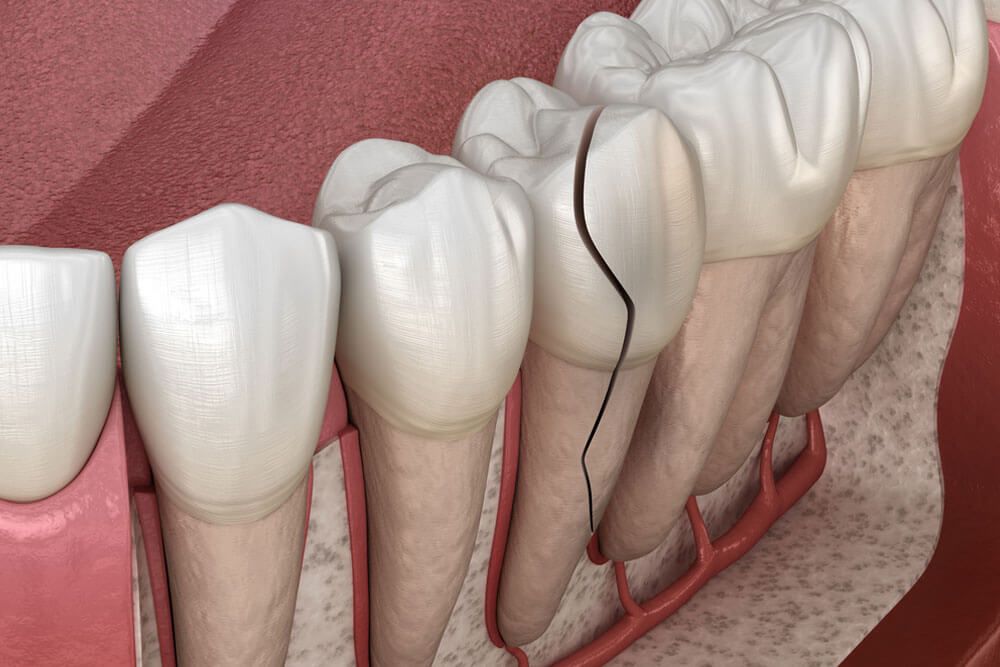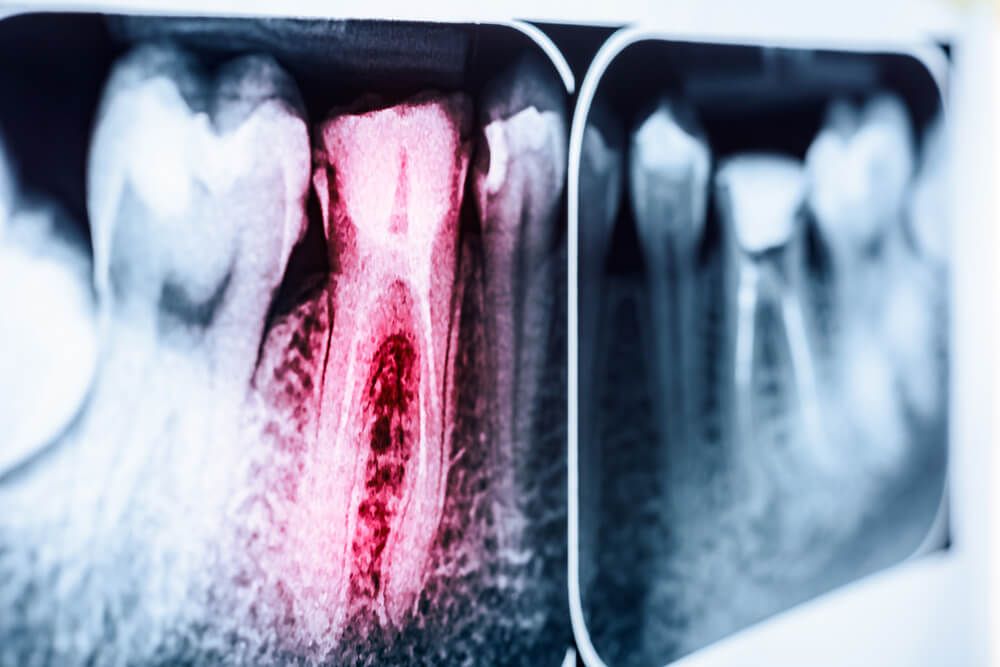With offices in Kennewick and Yakima Washington, dentists Dr. Hatch, Dr. Dawson, and Dr. Schafer at Columbia River Endodontics specialize in gentle root canals, as well as several other endodontic procedures. If you are experiencing tooth pain, have a cracked tooth, or have had recent dental trauma, schedule a consultation today. Our qualified, professional dentists and team will provide you with the information you require to make an informed decision about your oral health needs. If you would like to put an end to your tooth ache, an endodontic treatment may be the solution for you.
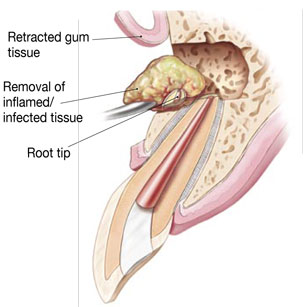
Root canal therapy is needed when the nerve of a tooth is affected by decay or infection. In order to save the tooth, the pulp (the living tissue inside the tooth), nerves, bacteria, and any decay are removed and the resulting space is filled with special, medicated, dental materials, which restore the tooth to its full function.
Having a root canal done on a tooth is the treatment of choice to save a tooth that otherwise would die and have to be removed. Many patients believe that removing a tooth that has problems is the solution, but what is not realized is that extracting (pulling) a tooth will ultimately be more costly and cause significant problems for adjacent teeth.
Root canal treatment is highly successful and usually lasts a lifetime, although on occasion, a tooth will have to be retreated due to new infections.
Signs and symptoms for possible root canal therapy:
- An abscess (or pimple) on the gums.
- Sensitivity to hot and cold.
- Severe toothache pain.
- Sometimes no symptoms are present.
- Swelling and/or tenderness.
Reasons for root canal therapy:
- Decay has reached the tooth pulp (the living tissue inside the tooth).
- Infection or abscess have developed inside the tooth or at the root tip.
- Injury or trauma to the tooth.
What does root canal therapy involve?
A root canal procedure requires one or more appointments and can be performed by a dentist or endodontist (a root canal specialist).
While the tooth is numb, a rubber dam (a sheet of rubber) will be placed around the tooth to keep it dry and free of saliva. An access opening is made on top of the tooth and a series of root canal files are placed into the opening, one at a time, removing the pulp, nerve tissue, and bacteria. If tooth decay is present, it will also be removed with special dental instruments.
Once the tooth is thoroughly cleaned, it will be sealed with either a permanent filling or, if additional appointments are needed, a temporary filling will be placed.
At the next appointment, usually a week later, the roots and the inside cavity of the tooth will be filled and sealed with special dental materials. A filling will be placed to cover the opening on top of the tooth. In addition, all teeth that have root canal treatment should have a crown (cap) placed. This will protect the tooth and prevent it from breaking, and restore it to its full function.
After treatment, your tooth may still be sensitive, but this will subside as the inflammation diminishes and the tooth has healed.
You will be given care instructions after each appointment. Good oral hygiene practices and regular dental visits will aid in the life of your root canal treatment.
How much will the procedure cost?
The cost associated with a root canal procedure can vary depending on factors such as the severity of damage to the affected tooth and which tooth is affected. Generally, endodontic treatment is much less expensive than the alternative of having the tooth extracted. An extracted tooth must be replaced with a bridge or implant to restore chewing function and prevent the adjacent teeth from shifting. These procedures tend to cost more than the endodontic treatment and appropriate restoration.
Root Canal Retreatement
In rare cases, root canal therapy fails to work as expected. The treated tooth might not heal properly or a patient might experience post-surgical complications that jeopardize the tooth. Root canal retreatment involves the removal of the previous crown and packing material, the cleansing of the root canals, and the re-packing and re-crowning of the tooth. In short, root canal retreatment is almost identical to the original procedure, aside from the structural removal. The success rate for a root canal retreatment runs at around 75%.
Root canal treatments and retreatments are a better alternative than extraction for most individuals. If a tooth has good bone support, a solid surface and healthy gums beneath it, it stands a good chance of being saved. Opting for root canal retreatment can be far less expensive than the alternatives. Dental implants, extensive bridgework and the creation of aesthetically pleasing prosthetic teeth cost far more than working with the natural tooth. They also require maintenance and feel less natural than a “real” tooth.
Why is root canal retreatment required?
Though the prospect of more endodontic surgery might not be pleasant, root canal retreatment is fairly simple. In general, the whole treatment can be completed in 1-3 visits.
There are a number of reasons why root canal therapy unexpectedly fails, including:
- Cracked crown leaking filling material.
- Curved or narrow canals not treated during the original procedure.
- Delay in the placement of restorative devices following the procedure.
- New decay to the tooth.
- New fracture in the treated tooth.
- Saliva entering the restorative structure.
- Undetected complex canal structures.
What does root canal retreatment involve?
On the day of the retreatment procedure a local anesthetic will be administered, unless another type of anesthetic has been selected. The affected tooth is isolated with a rubber dam. The dam protects the tooth during treatment from bacteria and saliva. The amount the dentist can do within a single appointment will much depend on the amount of inflammation present, and the complexity of the treatment.
The first step in a root canal retreatment is to gain access to the inner tooth. If a crown and post have been placed, these will be removed.
Next, filling material and obstructions that block the root canals will be removed. This removal is conducted using an ultrasonic handpiece. The advantage of using this tool is that any unwanted material is vibrated loose. Tiny instruments will then be used to clean and reshape the root canals. X-rays may be taken to ensure that the roots are thoroughly clean. If this part of the treatment proves to be complex, medicated packing material will be applied, and the rest of the cleansing procedure will be done at the next visit.
When the dentist is confident that the root canals are completely clean, gutta-percha is used to pack the space. This rubbery material seals the canals to prevent bacterial invasion. Finally, a temporary crown or filling is applied to tooth. At a later date, the color-matched permanent crown will be placed.

